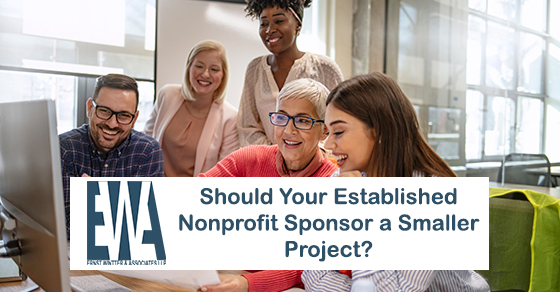Before the COVID-19 outbreak, nonprofit sponsor of all sizes had plenty of flexibility when it came to choosing which causes and charities to sponsor. However, the beginning of the pandemic forced many nonprofits to ramp up operations quickly under the mandates enacted because of the “new normal.”
For example, a small community nonprofit started to organize a drive that delivered groceries to low-income seniors. Because of the pressure of fulfilling its goal of helping low-income seniors receive healthy foods, the nonprofit did not have the time to file for a 501c(3) status and build the financial foundation to support its mission. With the help of an established nonprofit, the community group partnered with a fiscal sponsor that provided legal protections and the financial support to help the community group achieve its goal.
If you run an established nonprofit, should your organization provide legal and financial support for nonexempt nonprofits?
What is a Fiscal Sponsorship?
A large, established (501)c(3) organization receives grants, donations, and other types of recurring payments for providing the fiscal sponsorship of a smaller, nonexempt charitable organization. Payments go directly to the fiscal sponsor, which allows donors to deduct their contributions on tax forms. Although fiscal sponsorships come in several different forms, the prototype for establishing one involves setting up the nonexempt nonprofit organization’s accounting system.
How a Nonexempt Nonprofit Benefits from a Fiscal Sponsorship
Nonprofits that do not have the financial resources or in the case of COVID-19, the time to set up an accounting system, benefit from the legal and financial support provided by a larger, legally established nonprofit organization. Nonexempt nonprofits receive funding from donors and grantmakers to meet the goals established for helping underserved demographics
Some types of fiscal sponsorships are more common for certain nonprofit goals. Fiscally sponsoring art and culture projects represents the most popular type of fiscal sponsorship. Education, youth development, and services delivered for underserved children and families represent three more popular types of fiscal sponsorship programs. Projects considered too small to fund staff and infrastructure, as well as projects operating outside the United States, also benefit from a partnership with an established 501c(3) registered nonprofit organization.
How to Find the Right Fiscal Sponsor
If your nonprofit has not achieved a tax-exempt status, you should consider searching for a larger partner to handle the legal and financial responsibilities required to fund a smaller, temporary charitable drive. Vetting possible fiscal sponsors involves agreeing on the roles of each nonprofit organization, as well as discussing the expectations of each partner. Both partners have to agree on start and end dates to ensure a fiscal sponsorship achieves its goals in a timely manner. The tough decisions, such as deciding how to handle funding, must be made before the start of a nonexempt nonprofit’s charitable project. Since no other issue causes more friction than money, make sure to agree on a sponsorship fee before the first day of the project.
If both partners understand the responsibilities of each partner, then your project should run smoothly to achieve your charitable goals.
The Bottom Line
Small nonprofit organizations benefit from fiscal sponsorships because they do not have the financial resources and/or the accounting systems to complete a successful charitable project. What was once considered a trend caused by the COVID-19 pandemic might be a permanent model for small nonprofits to achieve their missions moving forward.
Ernst Wintter & Associates provides California nonprofit audits, broker dealer audits, tax services, and 401(K) audit services. Contact us for more information.
